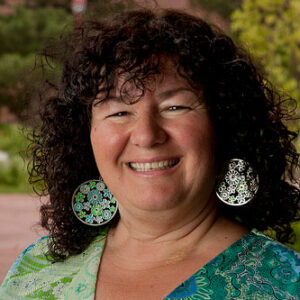By Dorothy Shapland, Cohort 5
 As the household chef, when I try out a new meal I ask my family what they like or don’t like about it – then I change the recipe, or toss it out, or add it to the rotation based on their responses. Decisions about meals are still in my control, but I have feedback that helps inform my choices. It is an effective evaluation system.
As the household chef, when I try out a new meal I ask my family what they like or don’t like about it – then I change the recipe, or toss it out, or add it to the rotation based on their responses. Decisions about meals are still in my control, but I have feedback that helps inform my choices. It is an effective evaluation system.
Where I work, there are a lot of top-down evaluations. Supervisors evaluate those they supervise, but there are some areas where evaluations happen bottom-up. Faculty, for example, get to evaluate their department chairs.
When it comes to equity that ensures every voice is heard–that the evaluation system allows everyone to grow from feedback–traditional systems fall short. Bottom-up feedback, at least in my work context, is simply informative, but the top-down evaluations determine job security, upward mobility, even pay increases or bonuses.
One of the flaws in this system seems to be that the top-down evaluation system has intentions outside the growth of the individual. It is a closed loop where the feedback comes with incentives or disincentives. At the same time, the bottom-up evaluations are an open loop where the feedback is given and often not even responded to. There are no consequences attached to negative feedback, although positive feedback may be cited in promotion or retention requests.
This inequity has me thinking about how I solicit feedback in my leadership, and what I do with it. How do I make my learning apparent?
As a teacher, I ask my students about how things are going and where I might improve. But I also ensure I close this loop and report back to my students about what I’m doing with that feedback. Sometimes I tell them I’m making a change immediately, (that assignment has too many moving parts, so I’ve revised it) or I will make a shift in the future thanks to their input (next semester I will change that -sorry it won’t benefit you, but thanks for helping me improve the course). Sometimes I just clarify and make something more transparent and clear up the confusion that may have led to the feedback (the perspectives offered in the different readings are essential to developing your own opinions, even if you don’t like doing that much reading, so no I won’t get rid of the ones you don’t agree with).
As a leader outside of the classroom I often didn’t stop to ask. I was in the lead position, and as a leader I pretty much can read what is working and what isn’t, so I never bothered to check in the same way I do in other areas of my life. So I decided to try it out.
I invited my team to complete an anonymous form asking – what is working, what could be improved, what would you like to see more of, what would you like to see less of, what else should I know. And then I closed the loop and reported back what I had heard and what I was going to do about it all.
This has me wondering two things – one, how can we do more of this kind of evaluation for learning and growth without attaching consequences and still close the loops so people know they are seen and heard? And two, how do we practice shifting the inequity in evaluation systems that are one-direction, punitive, or so open-ended that we never know what becomes of them?
That is what I’m pondering these days in my leadership journey. What about you? How do evaluations look in your context? Are they equitable? For everyone? Is there room for them to grow into something new?
